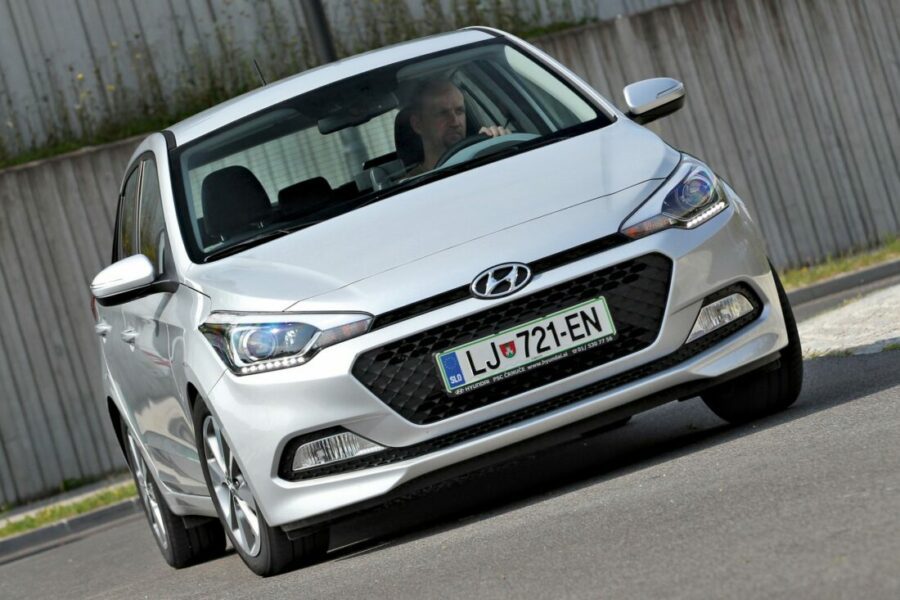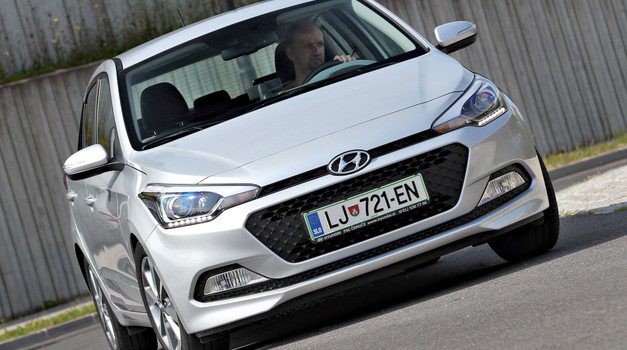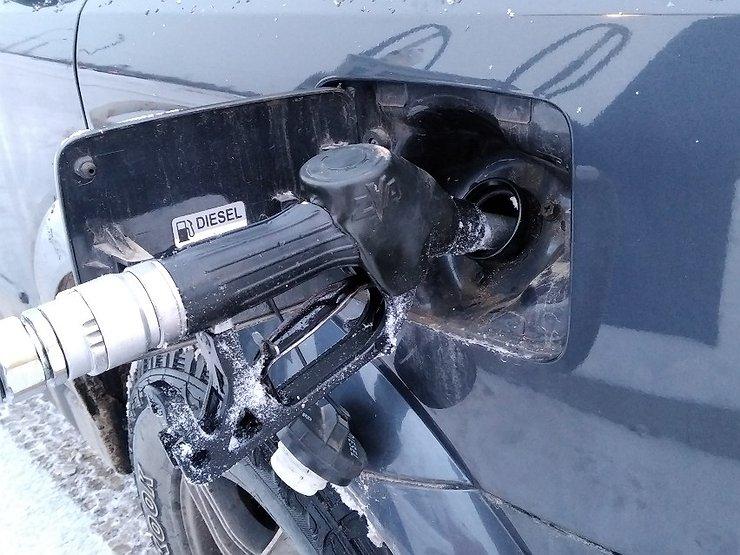
Grilles test: Hyundai i20 1.25 Style
So when you look through a magazine, you might end up on a page where your palms get wet, where your pulse quickens, and you can't take your eyes off the 200-plus-horse sports beauty. Of course, the Hyundai i20 is not a sports car, but if you just skip these two pages, you are really doing an unfair thing.

Uroš Modlič
The fact is that this is a car that outwardly wants to impress with a little fresh and, for Koreans, a rather bold design. Although this is a car from a segment where the offers are huge and where the sales figures are the highest, a bold design can also spell failure. The exterior is very modern, with LED headlights and a large slot for cold air under the hood is generally fashionable. We can dream of something very sporty, maybe even a civilian version of a WRC race car, but the reality is often different, the thickness of the wallet determines what will be in the garage, and that's somewhere here in this segment. where from generation to generation cars acquire quality and boldly expand the range of accessories, every little thing counts. The new i20 is a perfect example of this trend. Bigger, more comfortable, with materials and equipment that can easily be found in larger and more expensive models, it absolutely convinces us. It also remains practical, Hyundai says, and doesn't bring groundbreaking change and innovation where it's not needed.
The small, turbocharged, 1.248-cubic-foot four-cylinder petrol engine starts at the push of a button, and the key is neatly tucked away in a pocket or one of the many storage areas. On the test, he was not overly gluttonous, as he drank 6,8 liters of gasoline per 100 kilometers on average, and on a normal lap the consumption dropped to 6,3 liters per 100 kilometers. Thanks to these capabilities (84 "horsepower"), it will fully satisfy the average driver looking for a car who is not lazy or needs fast acceleration in order to be able to follow the flow of traffic normally or accelerate when necessary, overtake hunters at record low consumption on the sites highways connecting the periphery with the capital. To make driving safe, the car connects to your smart screen through a blue teeth connection. In the car radio with CD / MP3 player, you can store up to 1GB of your favorite tunes, which will shorten the same commutes to work and home.
To ensure that all commands are accurate and fast, most of the control of these devices can be carried out using the buttons on the multifunction steering wheel. We also want to mention the large 7-inch color LCD screen, which also doubles as a satellite navigation screen so you don't get lost in the city. The new i20 is definitely not a small city car, although it can officially be considered a smaller car. But its length is a little more than four meters, which is also noticeable in the interior. There is surprisingly plenty of space in the front seats, and the same can be said for the back seat.
Entering through the door is also not annoying, since it opens wide enough, and the back doesn’t sit deep somewhere, so we won’t have problems with the lower back or knees. For short distances it can temporarily act as a family car, but for a family trip with a bench full of toddlers, longer trips are not recommended. Even with luggage it doesn't allow for over-manufacturing, but with 326 liters it's not that small. In the Style i20 package, it acquires even the charm that the most fastidious drivers require. This means it's not the cheapest on offer, but that's what the base models are for, and the Style is for everyone who adds something to the look and comfort even while driving.
text: Slavko Petrovcic
i20 1.25 Style (2015)
Basic data
| Sales: | Hyundai Auto Trade Ltd. |
|---|---|
| Base model price: | 10.770 € |
| Test model cost: | 13.535 € |
| Power: | 62kW (84 KM) |
| Acceleration (0-100 km / h): | 13,1 with |
| Maximum speed: | 170 km / h |
| Mixed flow ECE: | 4,7l / 100km |
Costs (per year)
Technical information
| engine: | 4-cylinder - 4-stroke - in-line - petrol - displacement 1.248 cm3 - maximum power 62 kW (84 hp) at 6.000 rpm - maximum torque 120 Nm at 4.000 rpm. |
|---|---|
| Energy transfer: | front wheel drive engine - 5-speed manual transmission - tires 195/55 R 16 H (Continental ContiPremiumContact 5). |
| Capacity: | 170 km/h top speed - 0-100 km/h acceleration in 13,1 s - fuel consumption (ECE) 5,8/4,0/4,7 l/100 km, CO2 emissions 109 g/km. |
| Mass: | empty vehicle 1.055 kg - permissible gross weight 1.580 kg. |
| External dimensions: | length 4.035 mm – width 1.734 mm – height 1.474 mm – wheelbase 2.570 mm – trunk 326–1.042 50 l – fuel tank XNUMX l. |
Our measurements
| T = 26 ° C / p = 1.021 mbar / rel. vl. = 37% / odometer status: 6.078 km | |
| Acceleration 0-100km: | 13,8s |
|---|---|
| 402m from the city: | 19,0 years ( 120 km / h) |
| Flexibility 50-90km / h: | 16,8s (IV.) |
| Flexibility 80-120km / h: | 22,7s (V.) |
| Maximum speed: | 170km / h (V.) |
| test consumption: | 6,8 l / 100km |
| Fuel consumption according to the standard scheme: | 6,3 l / 100km |
| Braking distance at 100 km / h: | 38,9m |
| AM table: | 40m |
We praise and reproach
consumption could be lower
for long journeys we would take a more powerful (diesel) 90 "horsepower" engine.

